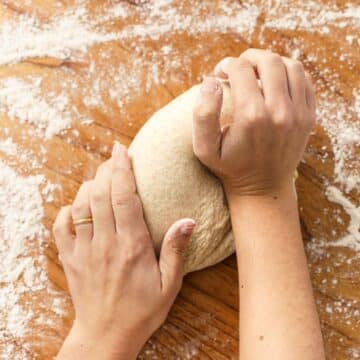In this article, we will explore some of the best rice flour substitutes, along with their benefits and examples of where they can be used. Rice flour is a popular gluten-free flour that is used in a variety of recipes, such as bread, cakes, and pastries. However, if you don't have rice flour or if you have an allergy or sensitivity to rice, there are several rice flour substitutes that you can use.

The 7 Best Rice Flour Substitutes
1. All-Purpose Flour
All-purpose flour is the most common substitute for rice flour. It is readily available in most grocery stores and can be used in a variety of recipes, from baked goods to pasta dishes. All-purpose flour is made from a blend of hard and soft wheat, which makes it a good substitute for rice flour in terms of texture and gluten content.
2. Almond Flour
Almond flour is a popular gluten-free substitute for rice flour. It is made by grinding blanched almonds into a fine powder, which makes it high in protein and healthy fats. Almond flour is a good choice for recipes that require a nutty flavor, such as cookies and muffins.
3. Coconut Flour
Coconut flour is another gluten-free and grain-free substitute for rice flour. It is made from ground coconut meat and is high in fiber and healthy fats. Coconut flour is a good choice for recipes that require a slightly sweet flavor, such as cakes and cookies.
4. Oat Flour
Oat flour is a gluten-free flour that is made from ground oats. It has a slightly sweet, nutty flavor and is a good choice for recipes that require a heartier texture, such as bread and muffins.
5. Buckwheat Flour
Buckwheat flour is a gluten-free flour that is made from ground buckwheat. It has a nutty flavor and a slightly dense texture, which makes it a good substitute for rice flour in recipes that require a hearty texture, such as pancakes and bread.
6. Tapioca Flour
Tapioca flour is a gluten-free flour that is made from the starchy root of the cassava plant. It has a light and fluffy texture, which makes it a good substitute for rice flour in recipes that require a delicate texture, such as cakes and pastries.
7. Quinoa Flour
Quinoa flour is a gluten-free flour that is made from ground quinoa seeds. It has a slightly nutty flavor and a dense texture, which makes it a good substitute for rice flour in recipes that require a heartier texture, such as bread and muffins.
Tips For Using Rice Flour Substitutes
Using rice flour substitutes can be a great way to create gluten-free and allergy-friendly dishes, and there are many different types of flour that can be used as a substitute. Here are some tips for using rice flour substitutes:
- Use nut flours: Nut flour, such as almond flour, hazelnut flour, and cashew flour, can be used as a rice flour substitute in many recipes. They add a unique flavor and texture to baked goods and are high in protein and healthy fats.
- Try bean flour: Bean flour, such as chickpea flour and fava bean flour, can also be used as a rice flour substitute. They are high in protein and fiber and have a slightly nutty flavor.
- Use potato starch: Potato starch can be used as a substitute for rice flour in recipes that require a light and fluffy texture, such as cakes and muffins. It is light and airy and can help to give baked goods a delicate texture.
- Experiment with unusual flours: There are many unusual flours that can be used as a rice flour substitute, such as teff flour, quinoa flour, and amaranth flour. These flours are high in nutrients and have unique flavors that can add depth to baked goods.
- Combine flours: You can also combine different types of flours to create a blend that mimics the texture and flavor of rice flour. For example, you can combine oat flour with tapioca flour and potato starch to create a gluten-free flour blend.
- Add xanthan gum: Xanthan gum is a natural thickener that can help to bind gluten-free flours together and give them a better texture. Adding a small amount of xanthan gum to your rice flour substitute can help to improve the texture and consistency of baked goods.
Table 1: Rice Flour Substitutes And Uses
| Flour Substitute | Benefits | Example Uses |
|---|---|---|
| All-Purpose Flour | Readily available, good texture, moderate gluten content | Baked goods, pasta dishes |
| Almond Flour | High in protein and healthy fats, nutty flavor | Cookies, muffins, cakes |
| Coconut Flour | High in fiber and healthy fats, slightly sweet flavor | Cakes, cookies, breads |
| Oat Flour | Gluten-free, sweet and nutty flavor, hearty texture | Breads, muffins, pancakes |
| Buckwheat Flour | Gluten-free, nutty flavor, hearty texture | Pancakes, breads, muffins |
| Tapioca Flour | Gluten-free, light and fluffy texture | Cakes, pastries, breads |
| Quinoa Flour | Gluten-free, nutty flavor, hearty texture | Breads, muffins, pancakes |
It's worth noting that some of these flours may require adjustments to the amount of liquid used in a recipe, and some may have a stronger flavor than others. Additionally, some of these flours may be more expensive or harder to find than others. However, by experimenting with different rice flour substitutes, you can create delicious and healthy dishes that are suitable for your dietary needs and preferences.
Conclusion
In conclusion, there are many rice flour substitutes available that can be used in a variety of recipes. All-purpose flour, almond flour, coconut flour, oat flour, buckwheat flour, tapioca flour, and quinoa flour are all good options for substituting rice flour, depending on the recipe and desired outcome. By experimenting with these substitutes, you can create delicious and healthy dishes that are suitable for your dietary needs and preferences.





Comments
No Comments